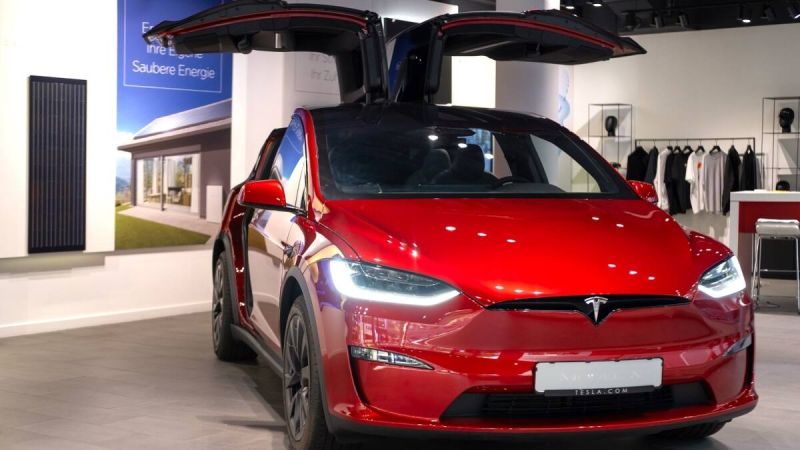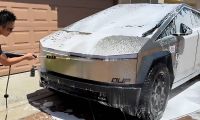My Old Man had a lot of sayings about life―most of which cannot be put into print today without some serious backlash. However, one that is printable is that when it came to cars, he was fond of saying, “There’s nothing wrong with the car aside from that loose nut behind the steering wheel.”
A New Report of a Tesla Death
Late yesterday afternoon U.S. News & World Report released a story about a new Tesla-related death of which the owner, “…may have been operating on the company's Autopilot driving system hit and killed a motorcyclist near Seattle, raising questions about whether a recent recall went far enough to ensure Tesla drivers using Autopilot pay attention to the road.”
According to the news report, the driver of the 2022 Tesla Model S involved in the accident admitted to police that he was using Autopilot and was looking at his cellphone while the Tesla was moving.
This admission of inattention while driving resulted in the driver of the Tesla being charged with vehicular homicide.
While this is an unfortunate tragedy that will affect many both directly and indirectly, the crux of the matter is who is to be blamed? Or more precisely, legally blamed for what happened. The driver of the Tesla or Tesla itself?
The expected focus of criminal proceedings will likely hinge on whether Tesla is at fault for not having removed unreasonable risks from their Autopilot software. Tesla already has a history of the NHTSA investigating 35 Tesla-related crashes linked to their automated driving system that led to 17 deaths.
When Did Car Safety Become an Issue?
Historically, car safety is credited with really beginning in 1965 when a young lawyer named Ralf Nader caught the public’s attention with his views of cars and accidents.
According to an entry by the Encyclopedia Britannica an investigative report on automotive safety titled “Unsafe at Any Speed” was published in 1965 by, “…consumer advocate Ralph Nader, who was then a 31-year-old attorney. Unsafe at Any Speed: The Designed-in Dangers of the American Automobile excoriated the American automotive industry, based in Detroit, for its prioritization of style and design over consumer safety. Nader’s book eventually became a best seller and helped spur the passage of the National Traffic and Motor Vehicle Safety Act in 1966, the country’s first significant automobile safety legislation.”
In his book, Nader’s narrative blamed the entire Detroit auto industry for dangers inherent in the automobiles of the day with a focus on attacking General Motors due to a 1961 Chevrolet Corvair lawsuit where a woman lost an arm after her Corvair flipped over. GM was charged in the suit for selling cars with unsafe steering designs.
According to a passage from Encyclopedia Britannica, “The case was settled out of court, but other similar cases followed. In fact, by 1967 about 150 lawsuits had been filed against GM in connection with claims regarding its Corvair. Many of these were also settled out of court, but GM won several judgments in cases that actually went to trial.”
However, what really got the public’s attention was a scandal afterward with GM accused of orchestrating a smear campaign against Nader using private detectives looking for dirt and hiring young women to lure Nader into sexual liaisons. While the tactics failed, “Nader sued GM for harassment, and GM settled the court case for $425,000.”
How Unsafe Were Cars in the ‘50’s and ‘60’s?
To give you an idea of just how unsafe cars were back in young Nader’s day, here is an informative and entertaining blast into the past that exemplifies the inherent dangers of cars that looked cool at the cost of safety.
Obsolete Car Features that Were Actually Dangerous
How Safe are Cars Today?
Historically, the rate of automotive accident-related fatalities has decreased with each decade since the 1920’s when the numbers were astonishingly high. However, there was an uptick in 2015 followed by a gradual rise and then another significant uptick around 2021 according to a New York Times article published last December.
While the article’s focus was more about the rise in automotive fatalities related to nighttime pedestrian fatalities, the journalist-led investigation pointed to a primary reason that could explain the rise in traffic death: the rise of smartphones.
But more to the point―smartphones combined with social media and automatic transmissions.
The article states:
1. “The adoption of smartphones for the past 15 years — where we are today, being addicted on social media and other apps — absolutely contributes to the increase in fatalities on our roads,” Matt Fiorentino, a vice president at Cambridge Mobile Telematics, which tracks dangerous driving for carmakers, insurers and regulators...”
2. It also partly reflects vehicle technology. Nearly all cars in the U.S. are automatic transmission, freeing drivers’ hands (or so they may think) to use phones. In Europe, almost 75 percent of cars still have gears that a driver must change manually.
Does this mean we should outlaw social media apps on smartphones or create electronic social media blockers in cars? Or at least manufacture all vehicles to be manual stick driven?
In a word, “No”. And here’s why.
The A-Word Problem When Driving
There is no argument that cars are much safer today than they have ever been. However, automotive safety features were originally geared toward protecting the vehicle’s occupants during a crash. Now there still is that, but the focus is more toward the collision avoidance features we enjoy today.
The problem, however, is that we gravitate toward using tech to solve what really might be a non-tech problem. We should be employing social engineers to solve what arguably really is a societal problem―ATTITUDE.
Case in point: Tesla owner misuse of their FSD feature (that in reality is not true FSD…at least not yet) in the hands of some Tesla car owners.
In the aforementioned Tesla traffic fatality, there will be a push to put blame on Tesla and have Tesla implement even more technological changes to their FSD and other features so that essentially their car will be 100% idiot proof.
In other words, Tesla models will have to be designed to thwart any attempts by drivers to trick their car's software into believing the driver is in control when he or she is actually busy on social media or napping and not paying attention to the road.
Throwing a tech solution into a social problem is doomed to fail; human nature is too devious. Coupling AI with FSD and policing all “drivers” to behave in traffic is not going to pass muster with automotive marketing as well because it would turn the “driving experience” into a non-experience.
Traffic Safety is an Attitude Problem
The point I am trying to safely drive toward is that between the lines of the NYT article and the viewer comments following the video above, is that traffic safety appears to be more of an attitude problem than it is a technological problem.
Can cars from the 1950’s and 1960’s be driven safely today? They can―and are―by enthusiasts who enjoy older vehicles. But only because these cars are driven with care and without the attitude you see in drivers with modern cars.
Perhaps My Old Man was not so far off as I once thought.
For more car safety-related articles, here are three useful ones for your consideration:
- Best Cars for Teens Recommended by Consumer Reports
- Most Unsafe Cars, SUVs, and Trucks with The Worst Crash Test Scores
- BMW’s Hindenburg Hybrid
Timothy Boyer is an automotive reporter based in Cincinnati. Experienced with early car restorations, he regularly restores older vehicles with engine modifications for improved performance. Follow Tim on Twitter at @TimBoyerWrites and Facebook for daily news and topics related to new and used cars and trucks.
COMING UP NEXT: Used Cars Most Likely to Have Paint Problems―It Happened to Me
Image source: Deposit Photos












